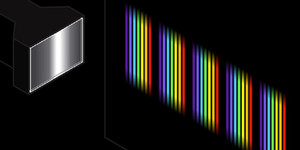 Modern optics studies optical science and engineering that become a very hot topic in 20th century. Concepts of quantum or electromagnetic properties of light are the base of these areas of optical sciences but it does not incluude any other topic. A sub-topic of quantum optics, modern optics works with the basic mechanical properties of light. Quantum optics isn't just theoretical; Some modern devices, such as lasers, have principles of operation that rely on quantum mechanics. photomultipliers and channeltrons which are an example of light detectors respond to individual photons. Electronic image sensors like CCDs, display short noise which corresponds to the statistics of every individual photon event. Photovoltaic diodes and Light-emitting diodes, also cannot be understood without understanding the concepts of quantum mechanics. Modern optics studies optical science and engineering that become a very hot topic in 20th century. Concepts of quantum or electromagnetic properties of light are the base of these areas of optical sciences but it does not incluude any other topic. A sub-topic of quantum optics, modern optics works with the basic mechanical properties of light. Quantum optics isn't just theoretical; Some modern devices, such as lasers, have principles of operation that rely on quantum mechanics. photomultipliers and channeltrons which are an example of light detectors respond to individual photons. Electronic image sensors like CCDs, display short noise which corresponds to the statistics of every individual photon event. Photovoltaic diodes and Light-emitting diodes, also cannot be understood without understanding the concepts of quantum mechanics.
Optics research includes some specific areas which include the study of how light interacts with specific materials in crystal optics and metamaterials. phenomenology of electromagnetic waves is taken as the main topic for research as in singular optics, non-linear optics, non-imaging optics, radiometry, and statistical optics. In addition to this, many computer engineers have shown interest in machine vision, integrated optics, and photonic computing as possible parts of the upcoming next-generation computers. Some custom optical prism manufacturer produces precision lenses which are designed for a particular purpose with the help of precision optical manufacturing process.
Nowadays, the branch of science that deals with optics are called optical science or optical physics to distinguish it from applied optical science, which is called optical engineering. Many sub-categories of optical engineering include photonic, illumination engineering, and optoelectronics with day-to-day practical applications such as fabrication, image processing, lens design, and testing of optical components. Some of these fields overlap, with vague boundaries between the terms of the disciplines, which have slightly different meanings in different parts of the world and in different sectors of industry.
Lasers
Laser device uses the process of stimulated emission in order to emit the light which is a kind of electromagnetic radiation. The full form of the term Laser is Light Amplification by Stimulated Emission of Radiation. Lightray emitted from the laser is spatially coherent in nature, which means that the light emitted for the laser is either in a narrow, low-divergence beam, or with the help of a lens it can be converted into one. Since the laser's microwave counterpart, the maser, was first developed, devices that emit microwaves and radio frequencies are commonly called masers.
| 
